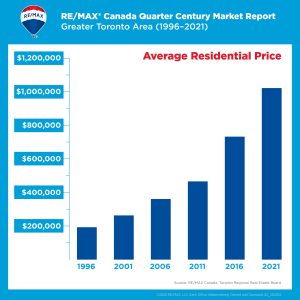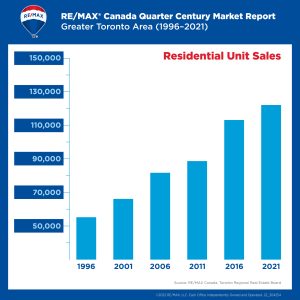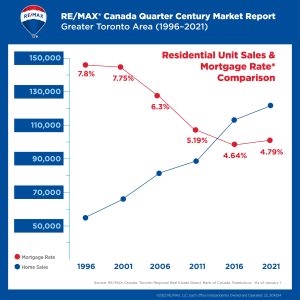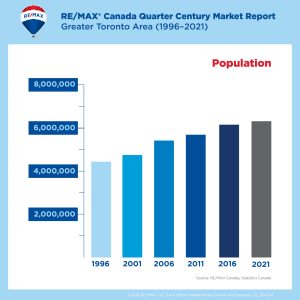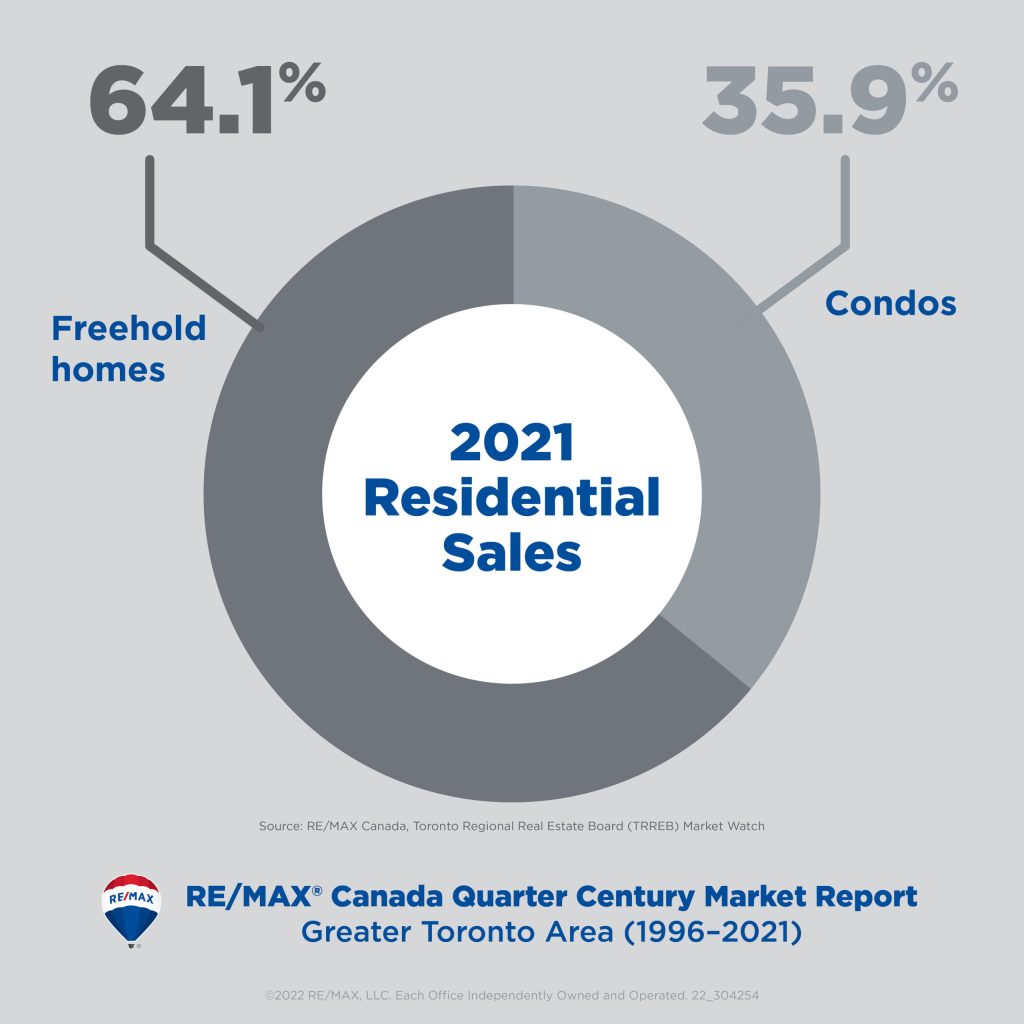Exceptional gains in Greater Toronto housing market fuelled by rapid population growth, land scarcity and low interest rates
Average price increased more than 450 per cent, while unit sales have doubled since 1996
Residential unit sales in the Greater Toronto housing market have doubled and average price has increased more than 450 per cent since 1996, as strong demand and limited supply continue to drive rapid price escalation throughout the 416 and 905 area codes, according to a new report released by RE/MAX Canada.
Between 1996 and 2021, more than two million homes sold in the GTA, representing a dollar volume in excess of $1.1 trillion. Average price has soared over the 25-year period, rising close to 453 per cent, from $198,150 in 1996 to $1,095,475 in 2021, at a compound annual growth rate of 7.08 per cent. Statistics Canada reports the Toronto CMA reached 6,202,225 in 2021, an increase of 45 per cent over the 1996 Census figure of 4,263,759.
“Performance of the Greater Toronto housing market over the 25-year period has been nothing short of remarkable,” says Christopher Alexander, President, RE/MAX Canada. This is especially so, when considering this time period was characterized by the tech meltdown of 2000, 9/11, SARS, the Great Recession of 2008, Ontario’s Fair Housing Plan and the on-going pandemic. “Many have raised concerns about the future of housing, given population growth and land scarcity within the Greater Toronto Area.”
The RE/MAX Canada Quarter Century Market Report analyzed home-buying activity in the nine Toronto Regional Real Estate Board (TRREB) districts that comprise the GTA – Toronto East, Toronto West, Toronto Central, Durham, Halton, Peel and York Regions, and Simcoe and Dufferin Counties – and found land availability, especially in the city’s core and bedroom communities, has waned. This, as migration, low interest rates, and affordability continue to play a critical role in the growth of the GTA. Triple-digit increases in sales were noted in Toronto Central, Halton Region, York Region, Simcoe County and Dufferin County over the past 25 years, while average sale prices reached new heights across the greater Toronto housing market, with percentage increases climbing between 1996 and 2021, from a low of 301 per cent in Toronto Central, to a high of 874 per cent in York Region.
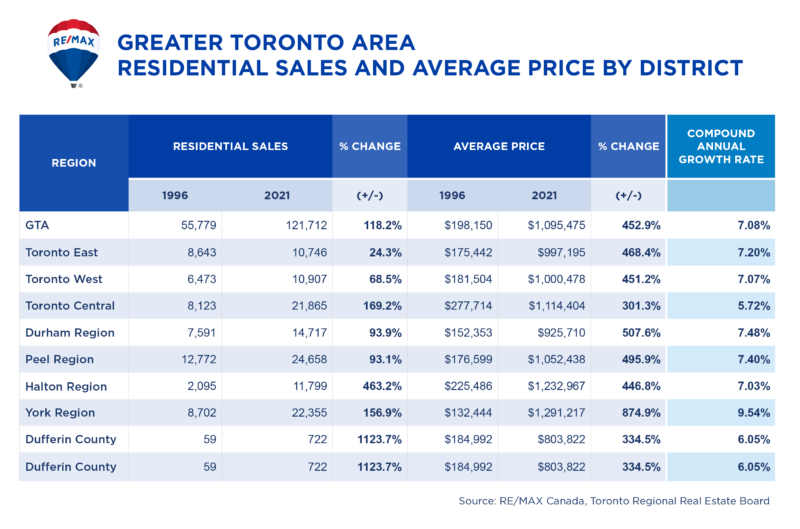
New construction has been a significant factor in the sales gains in Halton, Durham, Peel and York Regions, the latter two of which are approaching build-out. Over the years, the 905 communities offered affordable alternatives to those looking to purchase freehold properties. Starter homes on smaller lots attracted many first-time buyers in locations to the west, north and east of the 416 area code, supported by the new and proposed expansion of GO train service and another 400-series highway servicing the GTA’s northeast/west corridor. The movement brought new life into older communities, forever changing the make-up of cities such as Milton, Whitby, Clarington, East Gwillimbury and Innisfil.
“If you build it, they will come, and they sure did,” says Alexander. “Bolstered by historically low interest rates, a strong economy, grit and determination, buyers both young and old have moved to the city’s bedroom communities.”
With limited land to build on in the 905, emphasis is now shifting from freehold to high-density homes: condominiums in land-locked Mississauga now represent one in every two sales, while new condominium developments are planned and proposed for Brampton, York Region (transit-oriented communities) and Pickering’s City Centre.
Over the past quarter century, vertical growth has played a significant role in rising sales figures within the 416, with condominium apartments and townhomes now exceeding freehold sales in Central Toronto, accounting for 76 per cent of sales, according to TRREB data. With many of the vacant lots, parking lots and smaller commercial/industrial properties bought up, builders and developers are now looking at existing buildings and weighing the pros and cons of demolition. Some have gutted and redeveloped existing structures in prime locations, such as the Imperial Oil building on St. Clair (now the Imperial Plaza Condominiums), the old Four Seasons Hotel, and the Sutton Place Hotel (now a 727-unit residential condominium known as The Britt).

